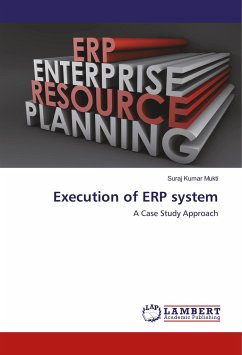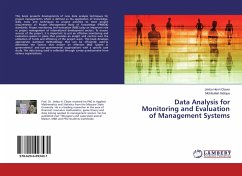
Execution of ERP system
A Case Study Approach
Versandkostenfrei!
Versandfertig in 6-10 Tagen
33,99 €
inkl. MwSt.

PAYBACK Punkte
17 °P sammeln!
ERP stands for Enterprise Resource Planning. Other common names used are: Enterprise Information Systems (EIS), Enterprise Wide Systems (EWS), Enterprise Portal(EP) or Enterprise Systems (ES). Enterprise systems are "commercial packages that enable the integration of transaction-oriented data and business process throughout an organization" (Markus and Tanis, 2000). ERP integrates the processes and data of an organization into single platform. Usually ERP systems will have many mechanisms including hardware and software, in order to attain integration, the majority of ERP systems use an integr...
ERP stands for Enterprise Resource Planning. Other common names used are: Enterprise Information Systems (EIS), Enterprise Wide Systems (EWS), Enterprise Portal(EP) or Enterprise Systems (ES). Enterprise systems are "commercial packages that enable the integration of transaction-oriented data and business process throughout an organization" (Markus and Tanis, 2000). ERP integrates the processes and data of an organization into single platform. Usually ERP systems will have many mechanisms including hardware and software, in order to attain integration, the majority of ERP systems use an integrated database to amass data for a variety of functions found within the organization. Enterprise resource planning (ERP) is a system used to coordinate and manage all the information, resources and functions of a business from a common data store. ERP system is composed of numerous modules, such as sales, human resources, inventory, production and finance & accounting, providing cross-organization integration of transaction-based data all through embedded organizational processes. Today, implementation of ERP systems is high on the priority list of organizations.












